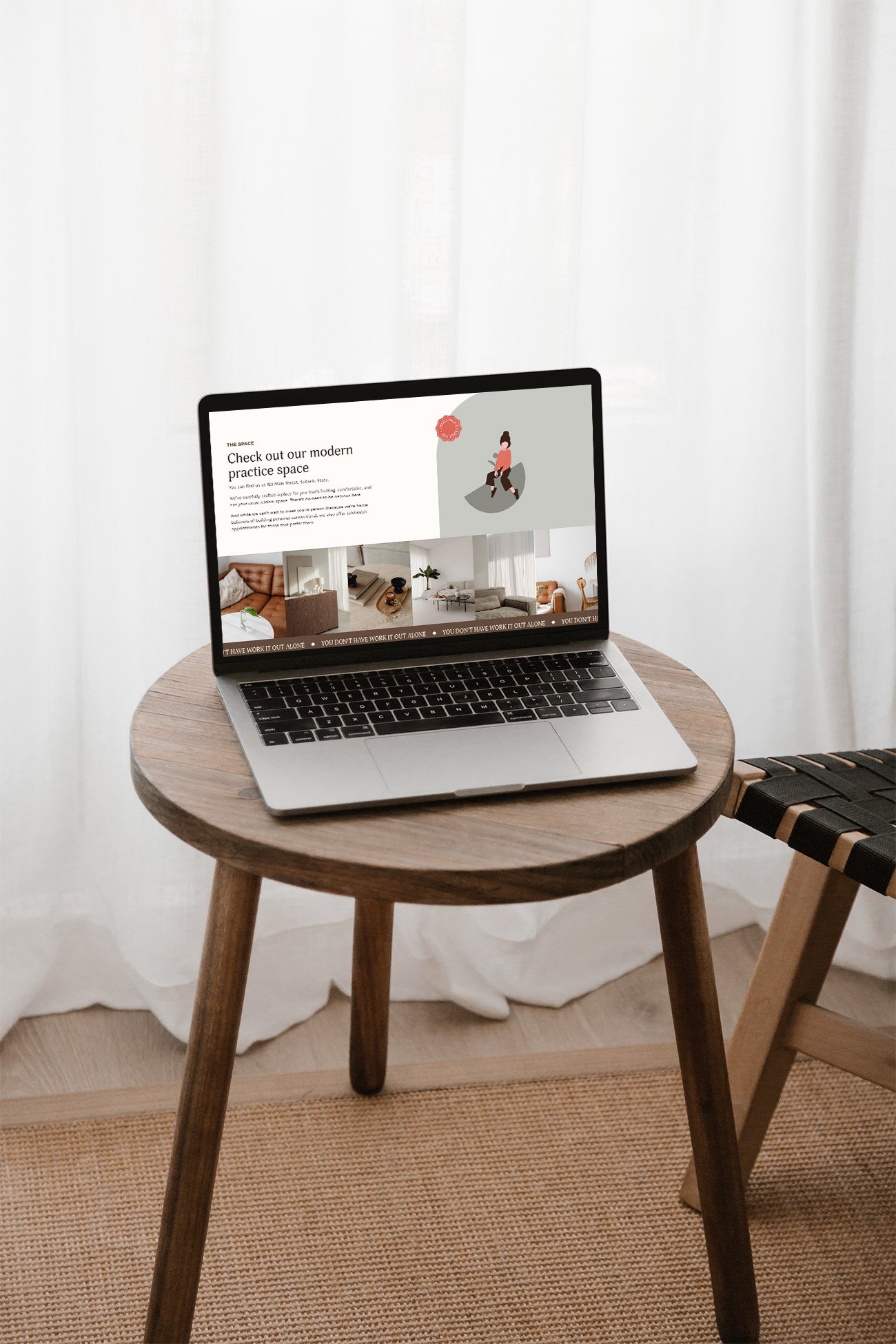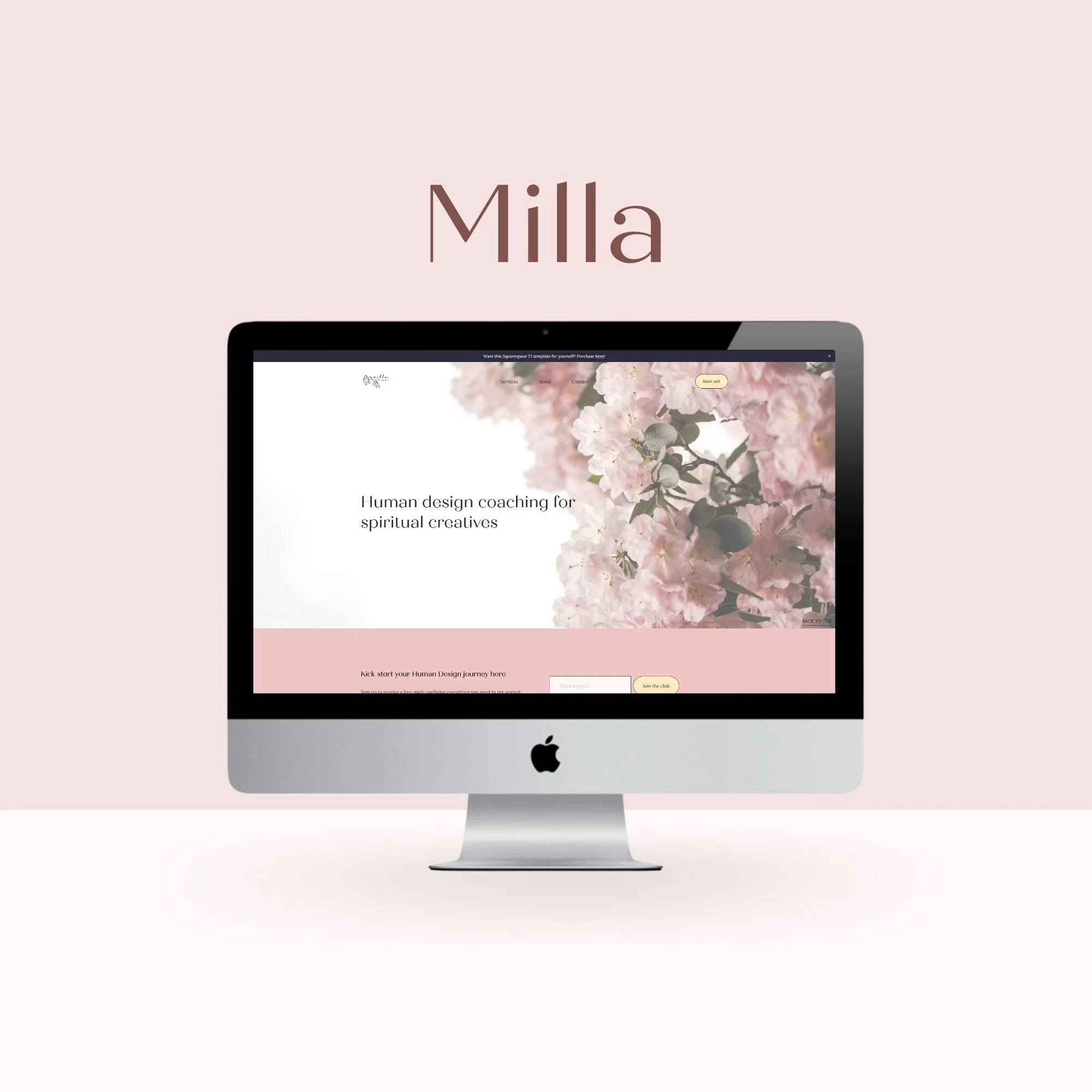Where to start when writing your website – so you DON’T have to stare at a blank screen
Remember back in school when you were trying to write an assignment?
You knew the content just fine, but when it came time to writing the actual document, your mind went totally blank. Or maybe not blank, but staring into the abyss with a vague collection of ideas swirling in your head and yet no foreseeable way of getting it out of your head and onto the page.
Tapping your pen, chewing the end of your pencil, the blinky cursor tormenting you… none of it helped. It started looking that desperate that the teacher (if you were lucky) helped you out with a bit of a guideline - and then all of a sudden it wasn’t just a blank page, but a starting point that helped the ideas start to flow.
If you’re like most small business owners, you probably feel exactly the same about your website content. You know what you do back to front, but writing it all up for your website? shudder (and I won’t get you started on the about page). But what about if you had a guide so you knew where to start?
If you’ve been struggling with this bit, here’s a high level overview of where to start:
Determine the main goal(s) of your website.
Before you dive into writing your website content, you need to work out the primary goals of your website. As a health and wellness practitioner these might include increasing your online visibility, attracting new clients and establishing your credibility. Once you’ve locked these goals in you can tailor your content to achieve them effectively.
For example if your main goal is to attract new clients, your website content should focus on showcasing the unique benefits and services you offer, as well as testimonials from happy clients. If your aim is to educate, you might include a blog with posts related to complementary medicine and wellness (or insert your niche here!). Having clear goals in mind will help you create a cohesive and purpose-driven website that resonates with your target audience and encourages them to take action.
Based on your goals, work out what pages you’ll need.
Once you've defined your website's objectives, it's time to plan the structure and organisation of your content. Start by outlining the essential pages you'll need based on your goals and the services you offer. Common pages for a health and wellness website typically include Home, About, Services, Testimonials, Blog, Online Booking, Contact, and possibly FAQs.
Consider what information your potential clients will be looking for and how you can present it in a user-friendly way. Organising your content logically will help them find the info they need quickly which improves their experience on your website. Keep your page names easy-to-understand – your website navigation is not the place to get creative, as any confusion you cause will lead to people clicking away.
Start with the home page.
Your home page is your website's virtual front door so you need to make a strong first impression – especially if you want to stand out from your competitors. Address your visitors' pain points and challenges right from the start. Understand the problems that your target audience faces and clearly communicate how your services can provide solutions.
Use the first section of the page (a.k.a the hero section, before you start scrolling) to succinctly state the benefits you offer. Use language that connects with your audience, highlighting the transformative impact of your services. Assure them that you understand their needs and can help.
Make sure your contact details, like phone number, email addresses and location (where relevant), are easily visible on the home page. An easy way to do this is to include these details in your website footer so it’s available on every day. You might also like to include a contact form to make it convenient for potential clients to reach out for inquiries or appointments.
If you need a bit more guidance than this, you might like Website Content Mastery, a step-by-step guide and workbook to write your website content. You’ll get over 60 pages to to guide you through writing just about every page of your website. Say sayonara to writer’s block! Get yours now.
Make sure your About page isn’t just about you (as much as we love you).
While the About page is an opportunity to introduce yourself and your background, the truth is that people don’t always care about that… they care about what you can do for them. Explain how your unique approach is tailored to address their specific concerns. Use real-life examples or client testimonials to illustrate the positive impact your services have had on their health and wellbeing.
By emphasising how your business is dedicated to helping women access health care on their own terms, without judgment, you can create a sense of trust and rapport with potential clients who value a compassionate and non-coercive approach to wellness – which is what will actually get them to come to you, rather than your competitors.
Build out your Service pages.
Your service pages are critical for providing detailed information about the specific offerings you provide. For each service, include a comprehensive description that outlines the benefits, process and any unique aspects that set it (and you!) apart from others in the field. If you have multiple services that are quite different, it’s best for them to have their own separate web page for SEO purposes – but if you’re super new and don’t have too much detail to provide yet, you can use a service overview page instead of individual pages.
Be transparent about your rates and packages. Provide clear instructions on how potential clients can book appointments, whether it's through an online booking system, phone call, or your contact form. Also make it really obvious WHERE the service is provided – will it be a Zoom call or in person? If in person, is there anything people should consider, e.g. parking or accessibility requirements?
You could also consider including an FAQ section on each service page to address common questions you get, which can help ease any uncertainties people might have before booking.
Add your supporting pages.
Aside from the core pages mentioned earlier, there are several supporting pages that are essential for a comprehensive website:
Online Booking: If you offer online appointment scheduling, create a dedicated page for it. Explain the process step-by-step and ensure that it's user-friendly, especially for your less tech-savvy clients.
FAQ: Compile a list of frequently asked questions and provide clear, concise answers. Anticipate concerns that potential clients might have and offer reassuring responses.
Contact: In addition to contact information on the home page, have a separate page with a contact form and a map if you have a physical location. Make it as easy as possible for clients to reach out to you.
Legal pages: Include essential legal pages such as Privacy Policy, Terms of Service, and Disclaimer. These pages are crucial for establishing trust and transparency with your audience. (Make sure you chat with a lawyer for specifics for your biz!)
There may also be more depending on your site, but this should give you a good start.
Still stuck? Look to other sites for inspiration if you need it, but it goes the same as it does for school - plagiarism ain’t cool, so take inspiration but write your own content.
Hope that helps – happy writing!
Cass

























